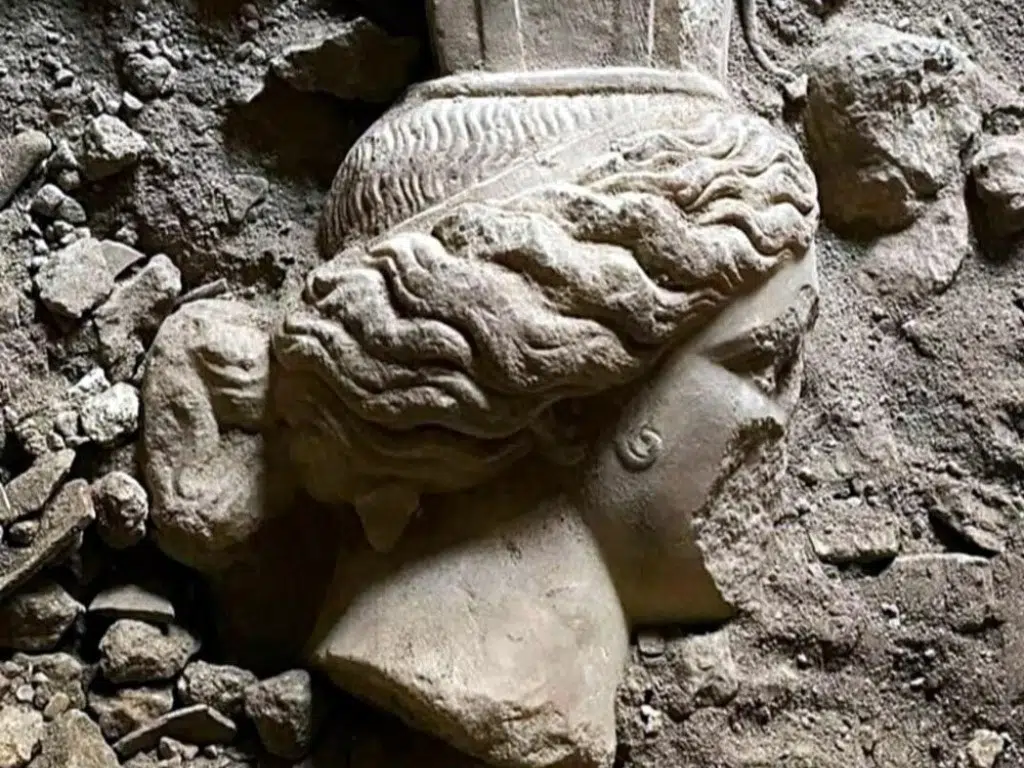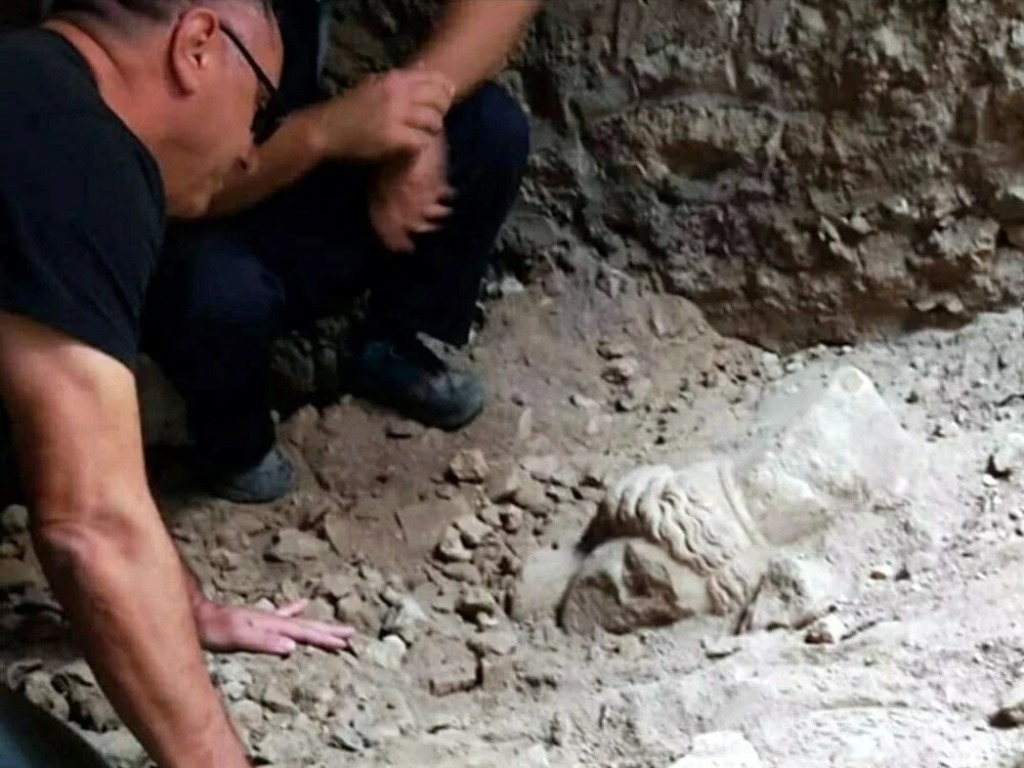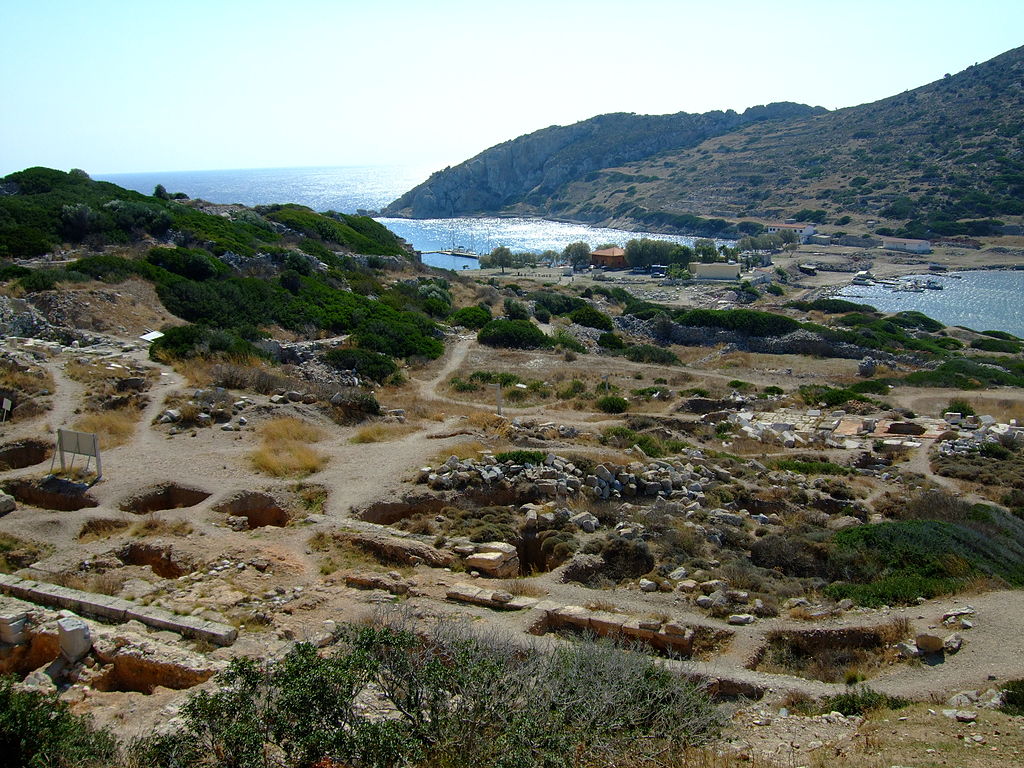
Archaeologists’ ongoing excavations in the ancient Greek city of Knidos, located in what is now southwestern Turkey, unearthed five stunningly beautiful heads of Greek and Roman statues earlier this week. Made of marble, the statues were sculpted in the Hellenistic and Roman era of the ancient Greek city and are believed to be approximately 2,000 years old.
Undoubtedly, they are some of the most spectacular ancient Greek archaeological finds of 2021.
Archaeologists working the site stated to Hurriyet on Sunday that the female head represented the Goddess Tyche, who was known as the protector of cities during the Hellenistic and Roman eras. The other four heads depict males.

Telling reporters that this was the first time in a long time that they had come upon such treasures in Knidos, Doksanaltı said, “The statue heads have the classical period art features and attract attention with their beautiful and perfect details. Knidos is a very big city, and these finds show us that we will encounter great surprises at any moment.”
Greek and Roman statues only the latest finds in ancient city full of temples, monuments
Knidos, or Cnidus, a Greek city in ancient Caria, was situated on the southern side of the Sinus Ceramicus.
Along with Halicarnassus (present day Bodrum, Turkey) and Kos, and the Rhodian cities of Lindos, Kamiros and Ialyssos, it formed the Dorian Hexapolis. The peoples of the Hexapolis celebrated games in honor of Apollo, Poseidon and the nymphs.

The excavations in the ancient city are being carried out under the direction of Ertekin Doksanaltı, a professor at Selçuk University. The statue heads were found in the vicinity of the Corinthian Monument at Knidos.
Doksanaltı told reporters that continuous excavations have been carried out year-round in the ancient Greek city since 2016 under the auspices of Turkey’s Culture and Tourism Ministry.
This city, so rich in ancient Greek culture, was also the site of the Temple of Aphrodite at Knidos, as well as the “Lion of Knidos,” the statue of a recumbent lion, which is now on display at the British Museum, as well as the famous Knidos Sundial.

The first Western knowledge of the many archaeological treasures of Knidos was thanks to the mission of the Dilettante Society, which was undertaken in 1812, and the later excavations under C. T. Newton in 1857–1858.
Agora, city walls, theater, temples still extant in huge ancient Greek city of Knidos
The agora, the theater, an Odeum, a temple dedicated to Dionysus, a temple of the Muses, a temple of Aphrodite and numerous minor buildings have been identified at Knidos, and the general plan of the city is now known.
The most famous statue by the master sculptor Praxiteles, the “Aphrodite of Knidos,” was made for the city. It has tragically been lost, but later copies exist, of which the most faithful is in the Vatican Museums.
Demeter of Knidos, Lion of Knidos in British Museum
In a temple enclosure Newton discovered the fine seated statue of Demeter of Knidos, which he sent back to the British Museum, and about three miles southeast of the city he came upon the ruins of a splendid tomb, and a colossal figure of a lion carved out of one block of Pentelic marble, ten feet in length and six in height, which has been supposed to commemorate the great naval victory known as the Battle of Cnidus, in which Conon defeated the Lacedaemonians in 394 BC.
Related: Twin Statues of Artemis and Apollo Unearthed on Crete
The Knidos Lion is now displayed in all its glory under the skylight of the Great Court in the British Museum.
The city was constructed partially on the mainland and partially on the Island of Triopion or Cape Krio. In ancient times it was connected to the mainland by a causeway and bridge. Today the connection is formed by a narrow, sandy isthmus.
By means of the causeway the channel between island and mainland was formed into two harbors. The area, perhaps thanks to the fact that it is far from a major city, still has a wealth of architectural ruins and almost-intact city walls. In many places, especially around the acropolis, in the northeast corner of the city, they are remarkably preserved.
This may also be in part thanks to the fact that the Romans took over the city with no resistance; they later gave the city its freedom within the Empire.
Eudoxus, the astronomer, Ctesias, the writer on Persian history, and Sostratus, the builder of the celebrated Pharos at Alexandria, are just some of the most remarkable native-born Knidians. The small island was so well known in the past that William Shakespeare made Artemidorus, a minor character in the play “Julius Caesar” a native of Knidos.
Bishop Ioannes of Cnidus took part in the Council of Chalcedon in 451. Bishop Evander was at the Second Council of Constantinople in 553 and Bishop Stauratius took part in the Second Council of Nicaea in 787.
See all the latest news from Greece and the world at Greekreporter.com. Contact our newsroom to report an update or send your story, photos and videos. Follow GR on Google News and subscribe here to our daily email!



